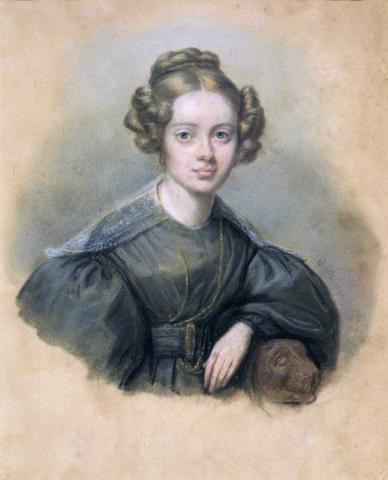The Biography of Niels Henrik Abel:
A student without any opportunities for further study
Abel became a student in 1821. With the exception of mathematics, his grades were no better than average. Back home at Gjerstad, his father had died in disgrace under very sad circumstances. Niels Henrik’s eldest brother sank into a depression from which he never recovered, and Niels Henrik was obliged to assume family responsibilities, which he never managed to live up to.
As a fresh student, Abel probably had a greater knowledge of mathematics than anyone else in the country. Holmboe had taught him what he could, and Abel had studied further on his own. From a well-equipped university library, he borrowed Newton, Euler, Lagrange and Gauss, among others, along with the latest publications and journals from Paris. Even before he became a student, he had begun what would become his first great mathematical achievement: his work on fifth degree equations.
Average grades
Abel took the obligatory preparatory examination, which was an amplification of the student examination. Except in mathematics, Abel’s grades were only average here as well, so there was not much more to study at the University for someone who did not choose the usual profession-oriented studies of theology, medicine or law. At that time, the University did not yet offer any degree in the natural sciences.
Studied on his own
Abel studied on his own, and in the spring of 1823, he made his scientific debut with an article in the country’s first scientific journal, Magazine for Natural Sciences (Magazin for Naturvidenskaberne) – in which a couple of other minor works by Abel were also published. Some of the professors supported Abel economically out of their own pockets, and both they and the University’s administration were aware that Abel would have to go abroad for any further study. The places where the foremost mathematical research was being conducted in those days were Paris – at L’École Polytechnique, L’École Normale and the Sorbonne University – and in Göttingen with the great mathematician, Carl Friedrich Gauss. However, the lack of public funds forced Abel to remain at the University of Christiania for four years.

Copenhagen
In the summer of 1823, however, he had a chance to travel to Copenhagen to visit the mathematicians there, primarily Ferdinand Degen, who was regarded as the leading mathematician in the Nordic countries. In Copenhagen, Abel took part in student life, worked a little on Fermat’s Great Theorem and began to study elliptic functions. He lived with his maternal aunt and her husband, a Danish naval officer, in their home at the naval base in Christianshavn. At a ball there, Abel met the nineteen-year-old Christine Kemp, who came to Norway the following year and was engaged to him.
Government grant for two years
During the spring of 1824, the efforts to provide Abel with public funding had progressed to the point where he was granted a government grant for two years, together with a promise of a journey abroad for another two years. At that time, in the spring of 1824, he paid from his own pocket to have his work on fifth degree equations printed. He had written this paper in French and compressed the proof down to six short pages. This had made it virtually unintelligible, so it did not become the "entrée" to the learned centres of Europe that Abel had hoped it would be.